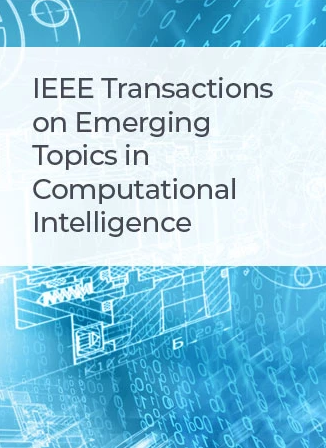KGCNA: Knowledge Graph Collaborative Neighbor Awareness Network for Recommendation
IF 5.3
3区 计算机科学
Q1 COMPUTER SCIENCE, ARTIFICIAL INTELLIGENCE
IEEE Transactions on Emerging Topics in Computational Intelligence
Pub Date : 2024-03-12
DOI:10.1109/TETCI.2024.3369976
引用次数: 0
Abstract
Knowledge graph (KG) is increasingly important in improving recommendation performance and handling item cold-start. A recent research hotspot is designing end-to-end models based on information propagation schemes. However, existing these methods do not highlight key collaborative signals hidden in user-item bipartite graphs, which leads to two problems: (1) the collaborative signal of user collaborative neighbors is not modeled and (2) the incompleteness of KG and the behavioral similarity of item collaborative neighbors are not considered. In this paper, we design a new model calledKGCNA:用于推荐的知识图谱协作邻居认知网络
知识图谱(KG)在提高推荐性能和处理项目冷启动方面越来越重要。最近的一个研究热点是设计基于信息传播方案的端到端模型。然而,现有的这些方法并没有突出隐藏在用户-物品双向图中的关键协作信号,这导致了两个问题:(1)用户协作邻居的协作信号没有被建模;(2)KG 的不完整性和物品协作邻居的行为相似性没有被考虑。为了解决上述问题,我们在本文中设计了一种名为 "知识图谱协作邻居感知网络(KGCNA)"的新模型。KGCNA 对用户和物品的前 k 个协作邻居进行建模,分别提取用户的前 k 个协作邻居的协作偏好、物品的缺失属性和物品的前 k 个协作邻居的行为相似性。同时,KGCNA 设计了一种新颖的信息聚合方法,对用户和物品采用不同的聚合方法,分别捕捉用户基于物品的行为偏好和物品在 KG 中的远距离知识关联。此外,KGCNA 还采用了信息导向聚合机制来提取鉴别信号,从而更好地研究用户行为意图。在三个基准数据集上的实验结果表明,与 CKAN、KGIN 和 KGAT 等最先进的技术相比,KGCNA 的性能有了显著提高。
本文章由计算机程序翻译,如有差异,请以英文原文为准。
求助全文
约1分钟内获得全文
求助全文
来源期刊

IEEE Transactions on Emerging Topics in Computational Intelligence
Mathematics-Control and Optimization
CiteScore
10.30
自引率
7.50%
发文量
147
期刊介绍:
The IEEE Transactions on Emerging Topics in Computational Intelligence (TETCI) publishes original articles on emerging aspects of computational intelligence, including theory, applications, and surveys.
TETCI is an electronics only publication. TETCI publishes six issues per year.
Authors are encouraged to submit manuscripts in any emerging topic in computational intelligence, especially nature-inspired computing topics not covered by other IEEE Computational Intelligence Society journals. A few such illustrative examples are glial cell networks, computational neuroscience, Brain Computer Interface, ambient intelligence, non-fuzzy computing with words, artificial life, cultural learning, artificial endocrine networks, social reasoning, artificial hormone networks, computational intelligence for the IoT and Smart-X technologies.
 求助内容:
求助内容: 应助结果提醒方式:
应助结果提醒方式:


